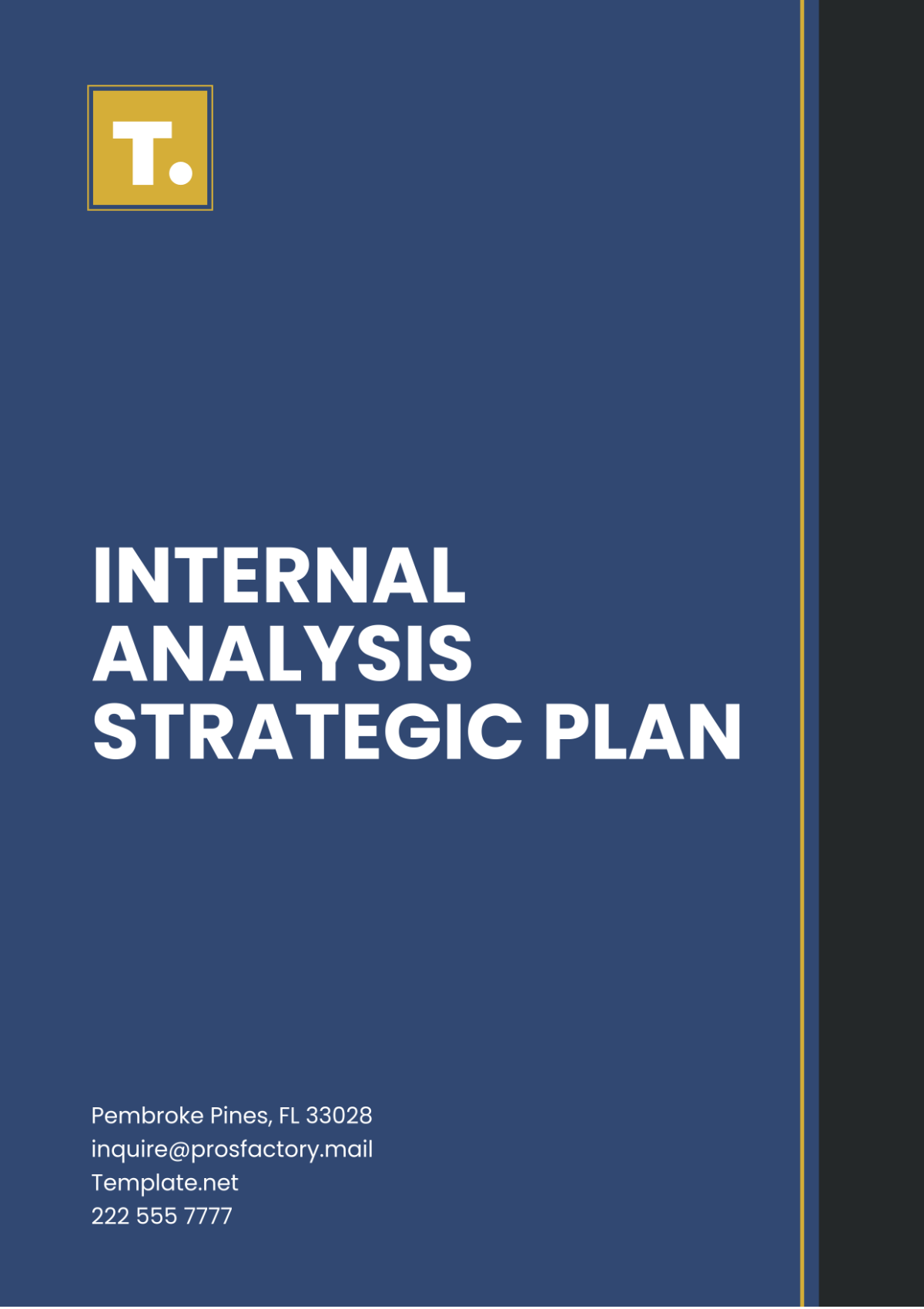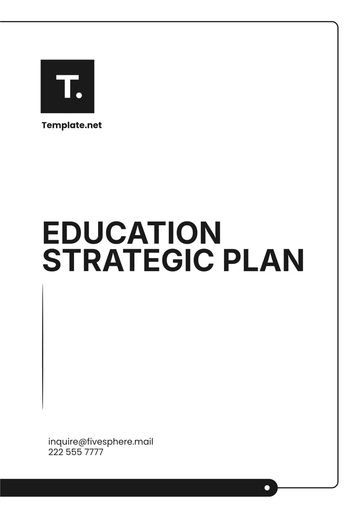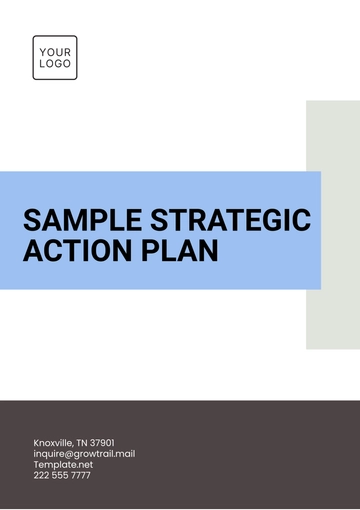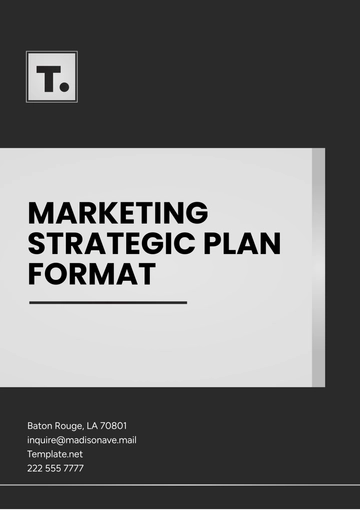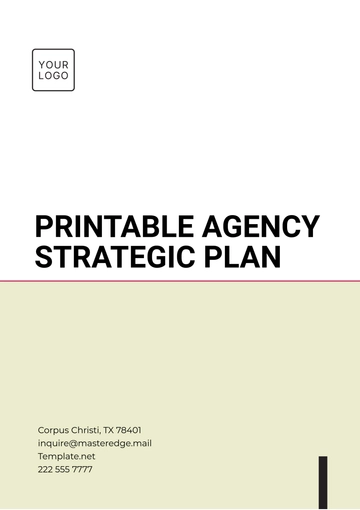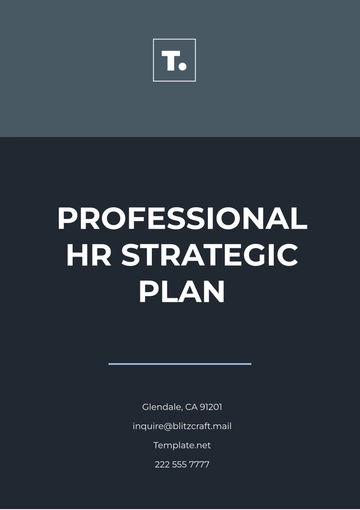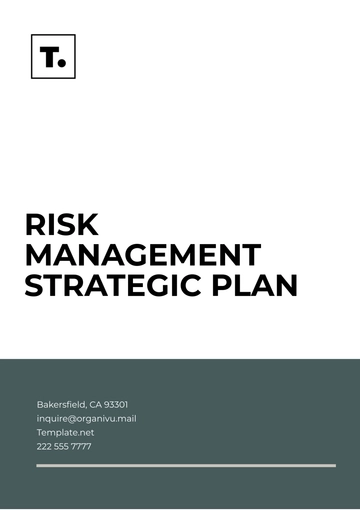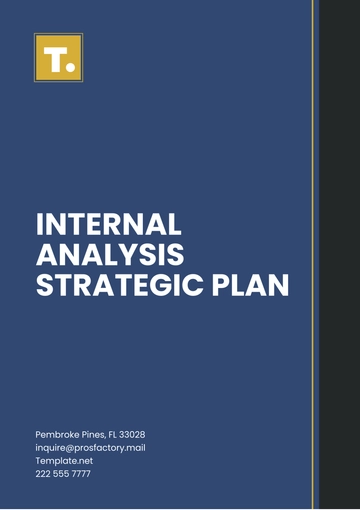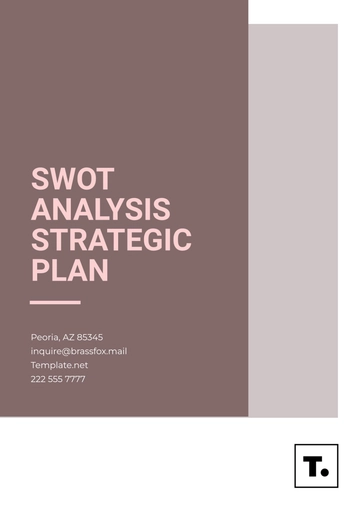Internal Analysis Strategic Plan
Prepared by: [Your Name]
Company: [Your Company Name]
Date: January 20, 2050
I. Executive Summary
This Internal Analysis Strategic Plan provides a comprehensive examination of [Your Company Name]'s internal environment to enhance strategic decision-making in the evolving landscape of 2050. By evaluating our resources, capabilities, processes, and performance metrics, this document identifies our strengths and weaknesses. The goal is to leverage our strengths while addressing weaknesses to ensure sustainable growth. Ultimately, this plan supports the organization in achieving its strategic goals efficiently and positioning itself competitively in the market.
II. Introduction
The purpose of this plan is to conduct a thorough internal analysis of [Your Company Name]. This includes assessing our resources, capabilities, and processes to gain insights into what drives our success and where improvements are needed. As we navigate a rapidly changing business environment marked by technological advancements and shifting consumer preferences, this strategic plan serves as a guiding framework for decision-making and strategic initiatives for the coming decades.
III. Internal Environment Assessment
A. Resources
Our organization possesses significant resources that can be leveraged for competitive advantage:
Human Capital: Our workforce comprises over 300 skilled professionals, including engineers, marketing specialists, and customer support staff, all trained in the latest technologies relevant to our industry.
A detailed inventory of these resources will be conducted to assess their availability and sufficiency in meeting our strategic objectives.
B. Capabilities
The capabilities of our organization include:
Evaluating these capabilities will help identify areas of competitive advantage that we can exploit in the future.
C. Processes
Communication Processes: We will assess our internal communication channels, such as the adoption of AI-driven collaboration tools, to ensure they are conducive to knowledge sharing and teamwork across departments.
D. Performance
A review of overall organizational performance metrics, including:
Financial Performance: In 2049, we achieved a revenue of $50 million, a 15% increase from the previous year, and a net profit margin of 12%.
IV. SWOT Analysis
A. Strengths
Experienced Workforce: Our team’s collective experience provides a solid foundation for innovation and quality.
Strong Brand Reputation: [Your Company Name] is recognized as a leader in customer service and product reliability.
B. Weaknesses
Limited Geographical Presence: While we have a stronghold in the North American market, our presence in Europe and Asia remains minimal.
Outdated Technology in Some Areas: Certain legacy systems are hindering operational efficiency and should be upgraded.
C. Opportunities
Expansion into Emerging Markets: New markets in Asia and Africa present significant growth opportunities due to increasing demand for our products.
Product Diversification: Developing eco-friendly products aligns with the growing consumer preference for sustainability.
D. Threats
Intense Competition: Competitors are rapidly advancing their technology and product offerings, requiring us to innovate continuously.
Economic Downturns: Global economic uncertainties could impact consumer spending and investment.
V. Key Performance Indicators (KPIs)
To measure the success of strategic initiatives, the following KPIs will be tracked:
Revenue Growth: Targeting a 20% increase in annual revenue by 2052.
Net Profit Margin: Maintaining a net profit margin of at least 15%.
Customer Retention Rate: Aiming for an increase in customer retention rates to 95% over the next three years.
Employee Satisfaction Index: Striving for an employee satisfaction score of 85% through enhanced workplace initiatives.
VI. Recommendations
Based on the internal analysis and SWOT findings, the following recommendations are made:
VII. Implementation Plan
A. Short-term Goals
Conduct Technology Needs Assessment: Complete within the first quarter of 2050, leading to a prioritized technology upgrade plan.
Initiate Employee Skill Development Programs: Roll out training programs focusing on digital skills within six months.
B. Long-term Goals
Expand Operations into Two New Markets: Successfully enter Europe and Asia by the end of the next fiscal year (2051).
Achieve a 10% Increase in Customer Retention Rate: Target to reach this goal by 2053 through improved customer engagement strategies.
VIII. Conclusion
This Internal Analysis Strategic Plan serves as a roadmap for strengthening [Your Company Name]'s internal environment. By executing the recommended actions and diligently monitoring our KPIs, the organization will be better positioned to achieve its strategic goals and sustain a competitive advantage in the marketplace. As we approach 2050 and beyond, adapting to change will be critical for our continued success.
Plan Templates @ Template.net
